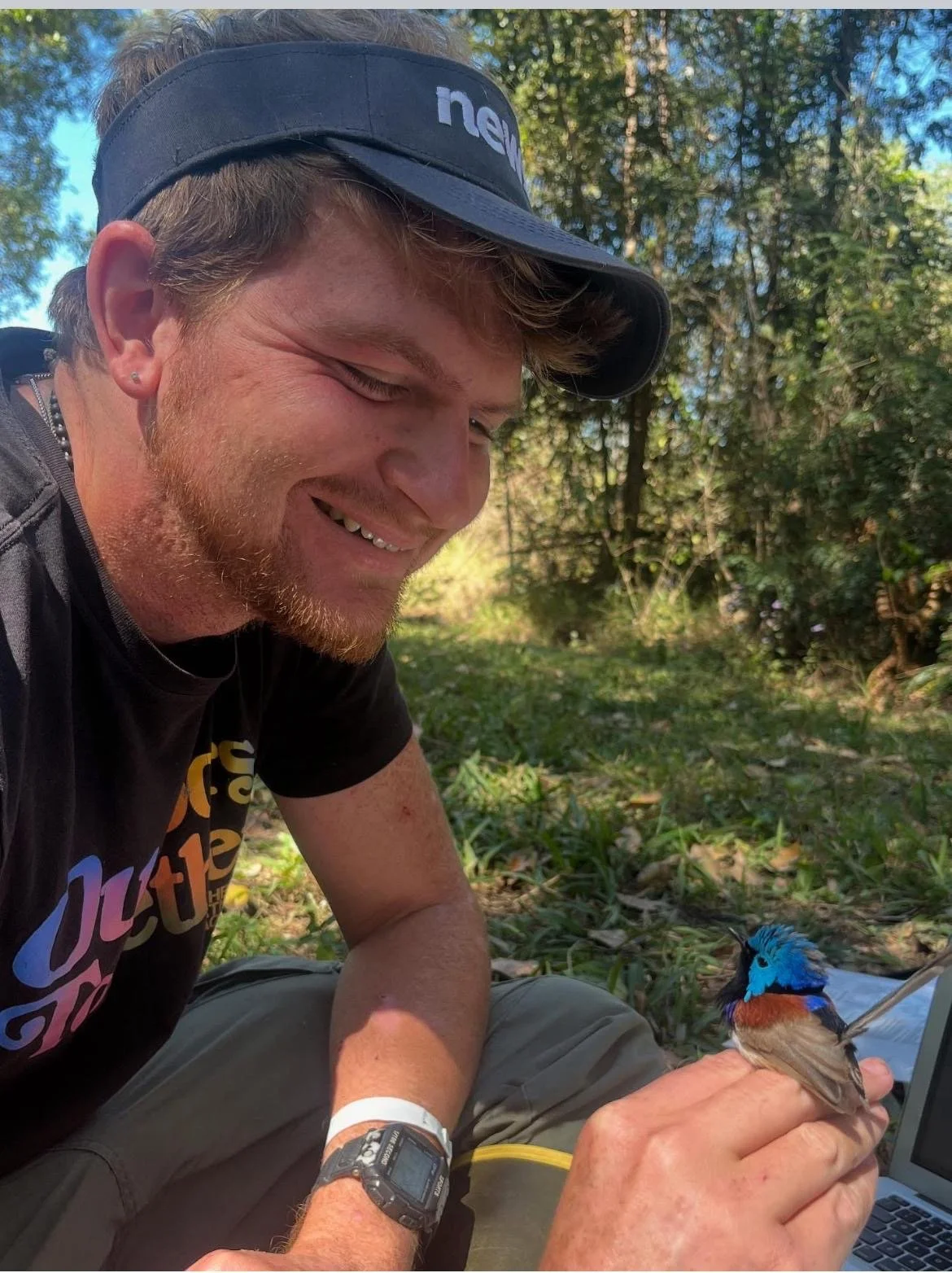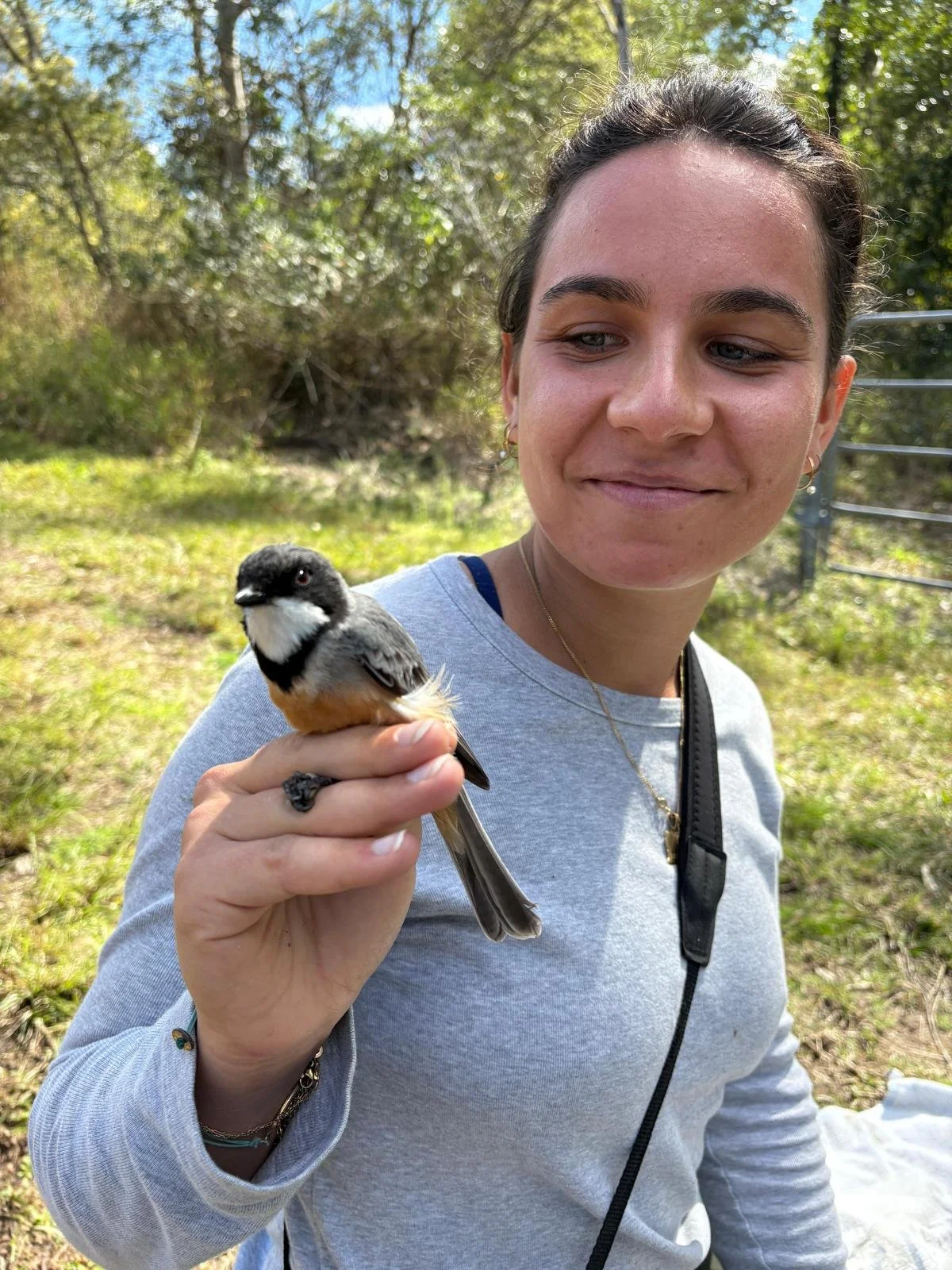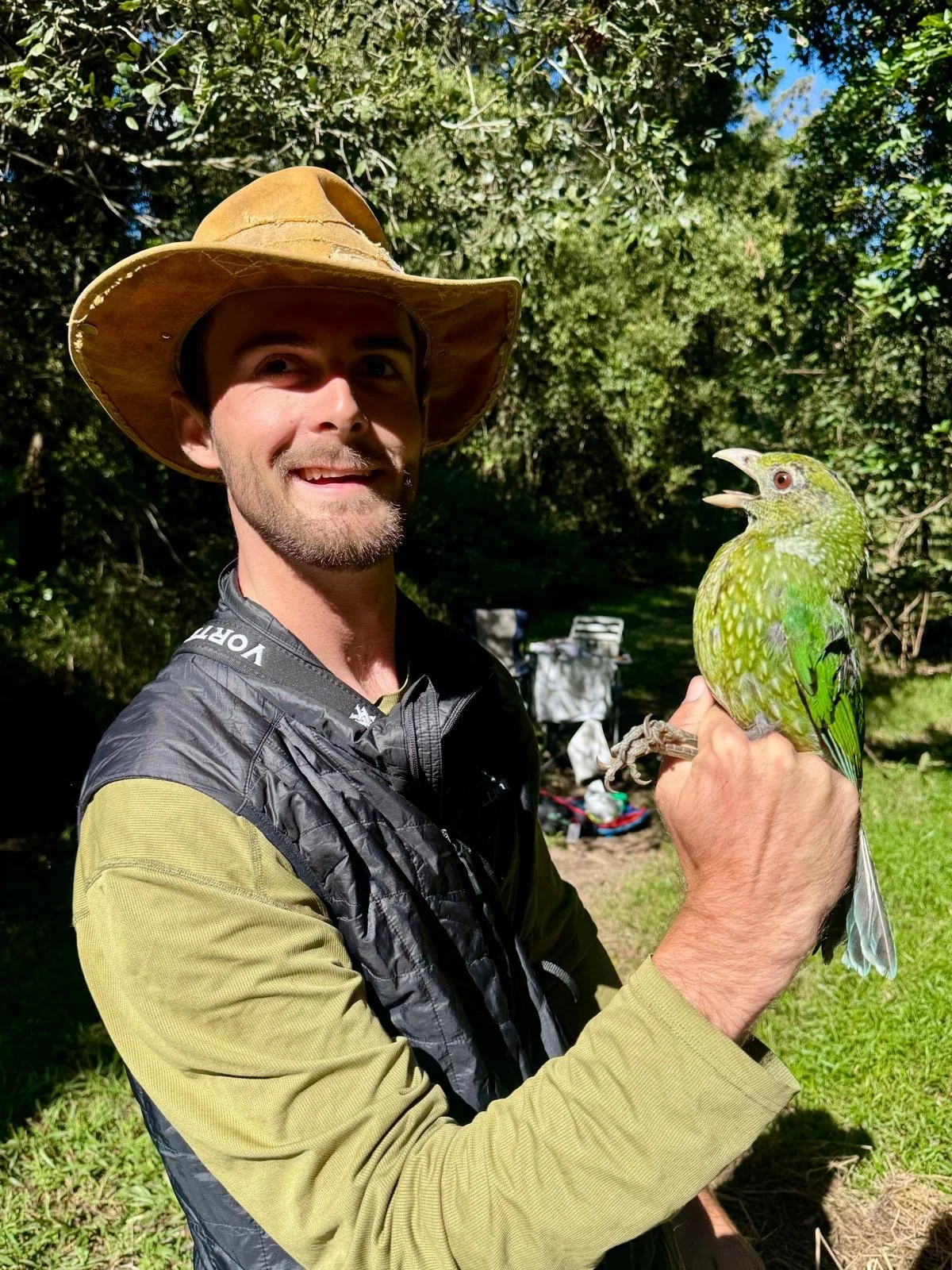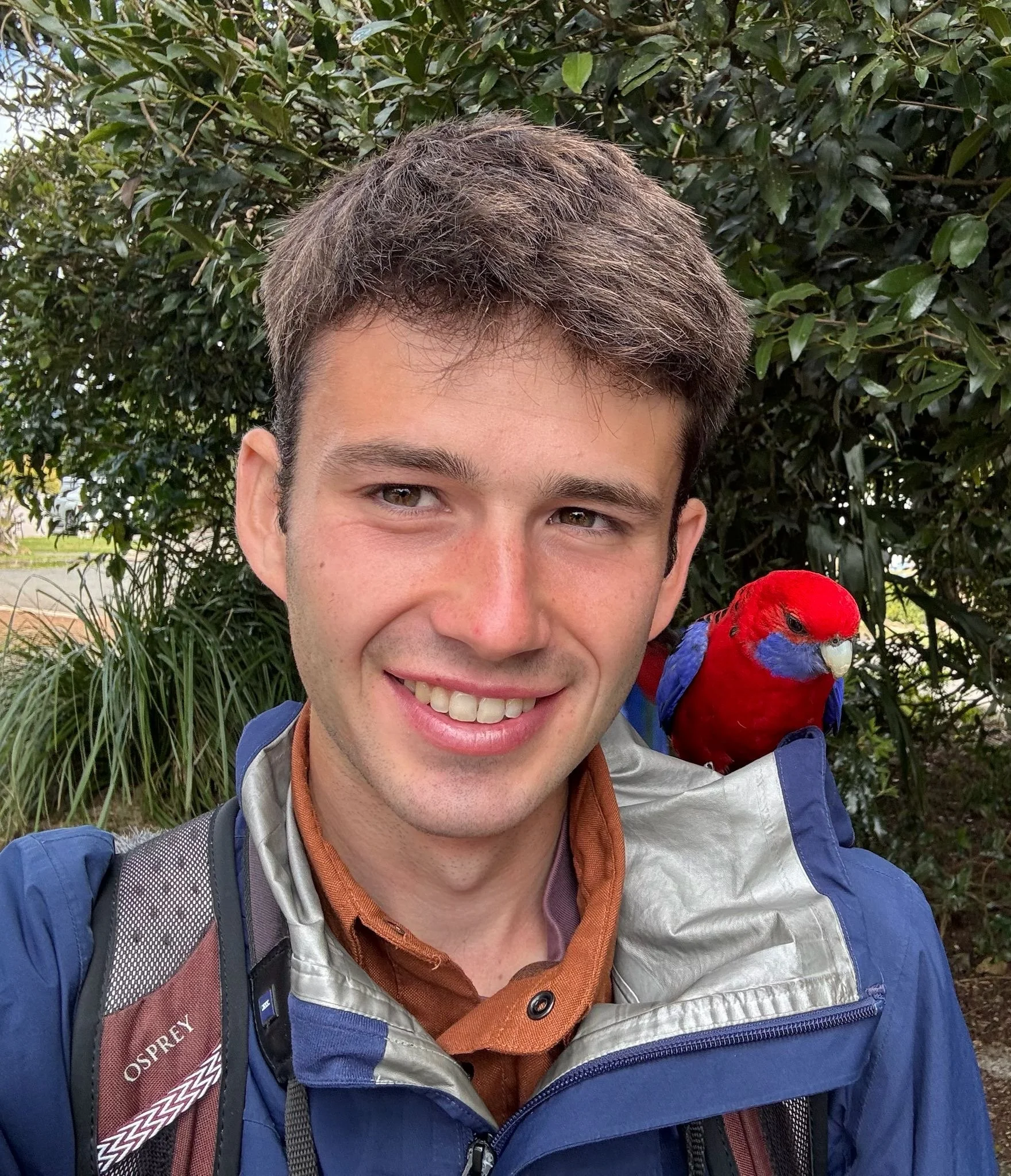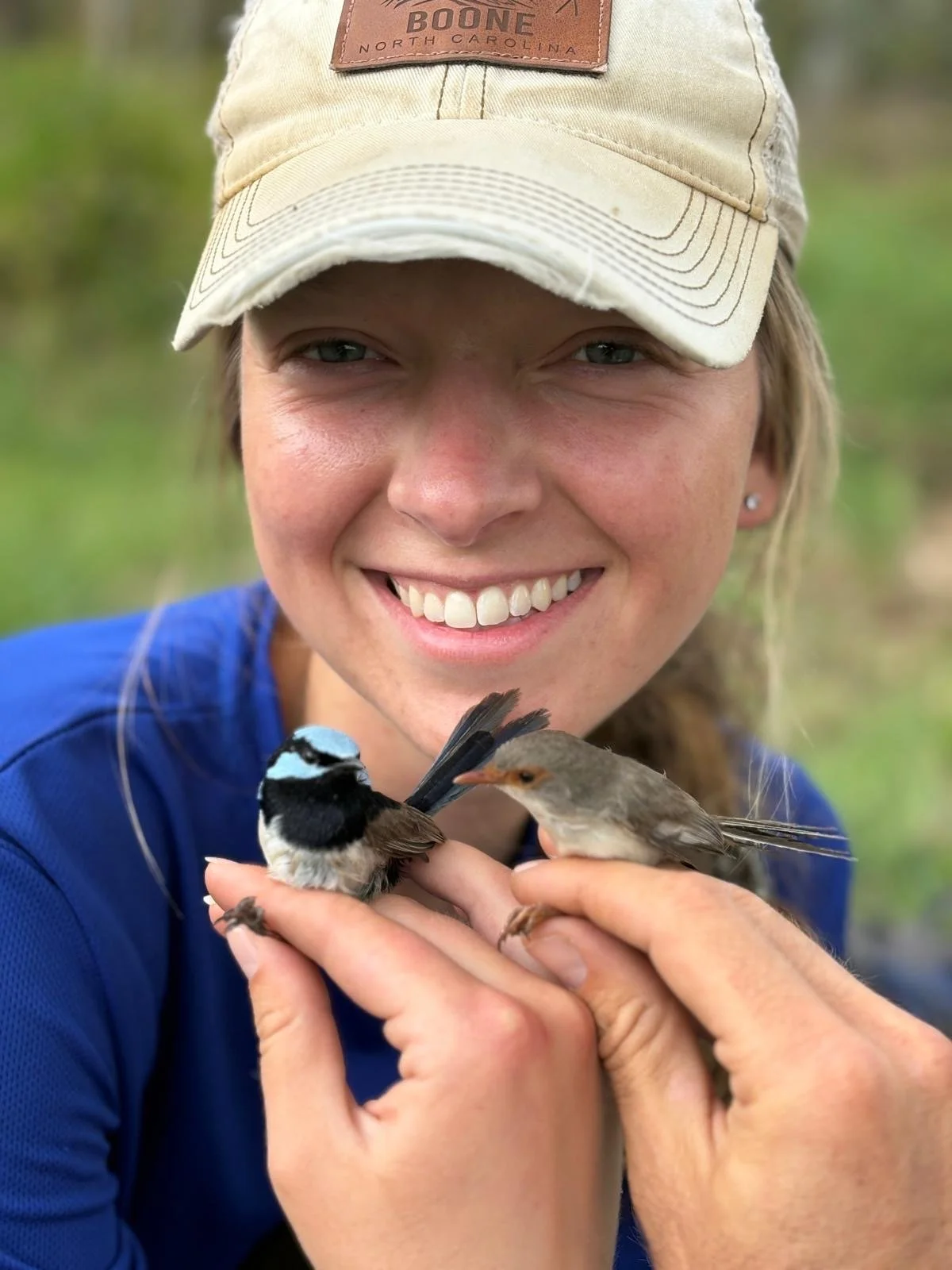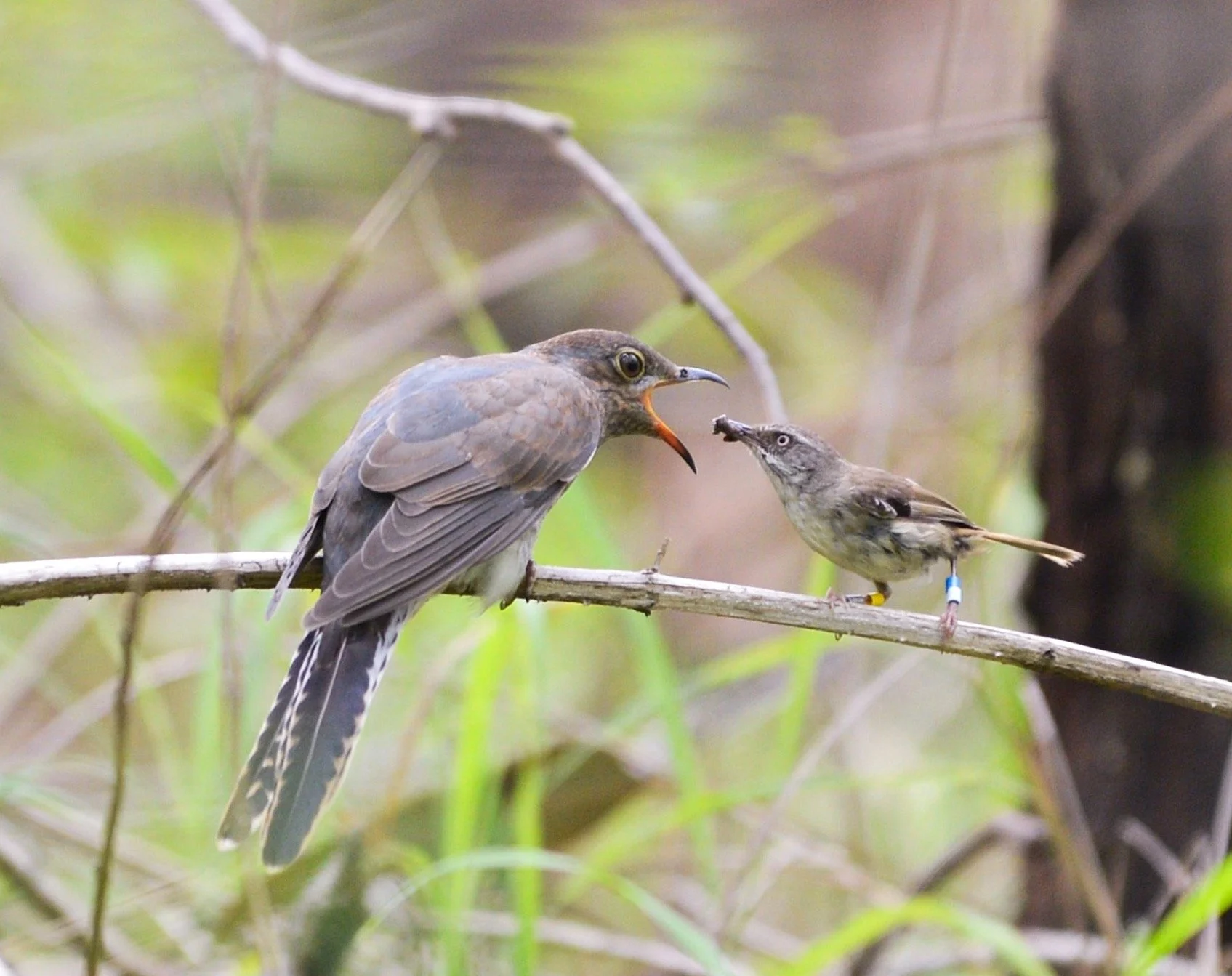
Origins and Adaptations Lab
We combine curiosity and purpose to uncover what organisms do, why they do it, and how ecological insights can benefit humanity
We use a variety of marine and terrestrial study systems and conduct research across three broad topics
Science for understanding We advance knowledge in behaviour, ecology, and evolution, while exploring fundamental questions about how ecological processes have shaped who we are and our place in the natural world.
Birds use the same call to communicate across species
Like humans, fish domesticate shrimps to help manage their farms
Sparrows and people use the herbal medicine in the same way
Science for connection We recognise the importance of natural history and work to expand knowledge through student-led publications and collaborative partnerships with the public. By engaging students, citizen-scientists and communities, we build capacity for future research and foster a deeper appreciation of biodiversity.
First record of nestling adoption in the superb fairy-wren
New insights into the behaviour of Australia’s cryptic cuckoos
First record of male feather traits in a female red-backed fairy-wren
Science for solutions We use ecological insights to tackle challenges in conservation, sustainable development, and public health-informing strategies that support biodiversity, strengthen ecosystem resilience, and promote human well-being.
Covid-19 showed how human recreation affects how fish use coral reefs
A common pesticide stunts the development of baby fish
Preserving seagrass lowers disease-causing pathogens in seafood
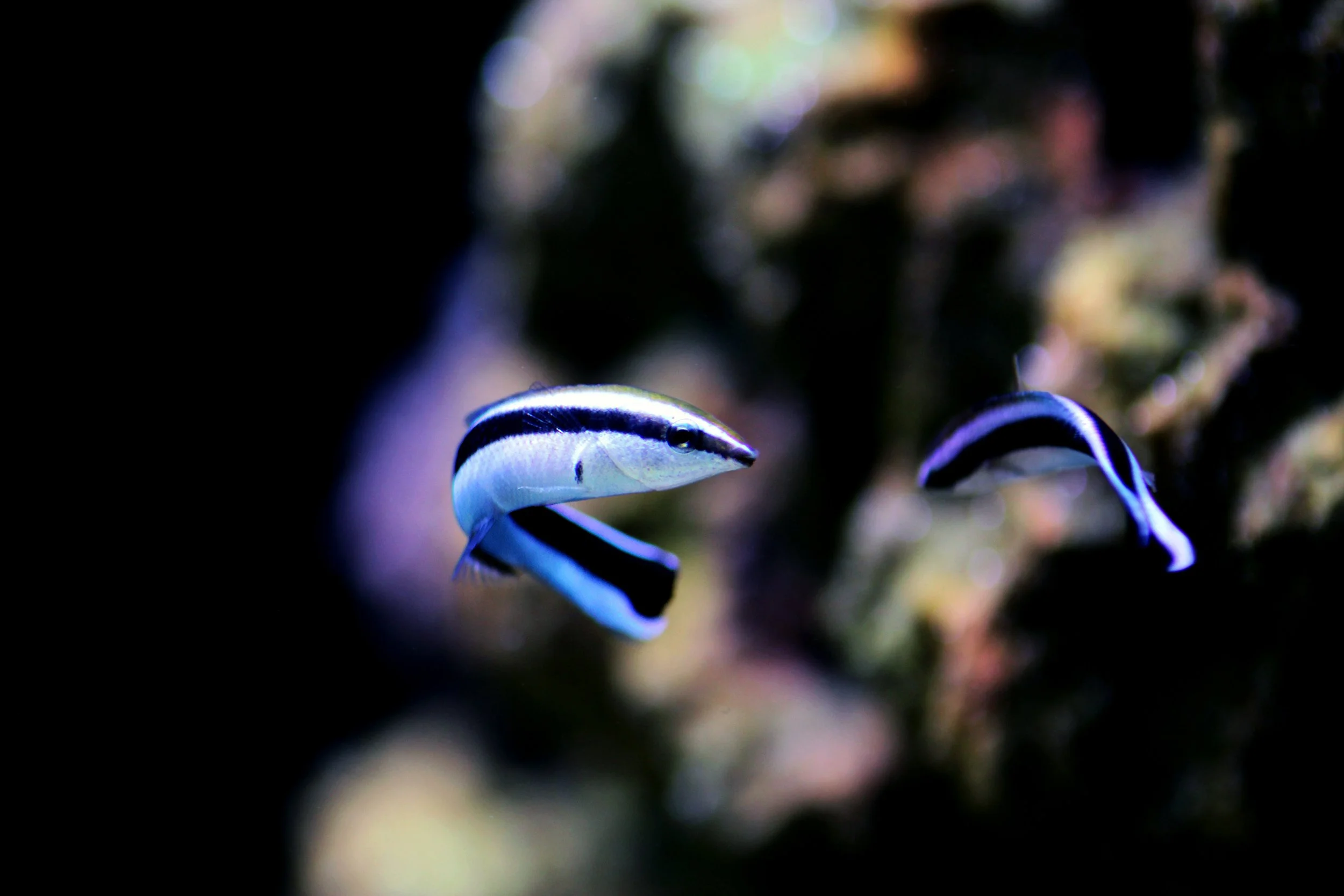
Peer Reviewed Publications
Underline indicates lab member. For citations see my Google Scholar page.
If you do not have access to any of these articles, please feel free to contact me and I’ll be happy to send you a copy.
62. Welkin JF, Khalil S, Lantz SM, Boersma J, Feeney WE, Schwabl H, Karubian J, Webster MS (Accepted) Ornamentation is associated with increased social costs in male red-backed fairywrens (Malurus melanocephalus). Behavioral Ecology
61. Feeney WE, Kennerley JA, Wheatcroft D, Liang W, Lamb JB, Teunissen N, Lawson SL, Enos JK, Zhou B, Poje C, Richardson NM, Ryan TA, Zamora M, Cowan Z-L, Brooker RM, Attwood M, Gloag R, Fiorini VD, Gill SA, Peters A, Honza M, Spottiswoode CN, Hauber ME, Manica A, Webster MS, Blasi D (2025) Learned use of an ancient sound-meaning association in birds. Nature Ecology & Evolution. 1-13 doi.org/10.1038/s41559-025-02855-9
60. Brooker RM, Cowan Z-L, Martin J, Evans S, Wong B, Lecchini D, Feeney WE (2025) Competitive cleaning: behavioural variation supports coexistence of two juvenile sympatric cleanerfishes. Biology Letters 21: 20250079. doi.org/10.1098/rsbl.2025.0079
59. Corneliussen L, Kennerley JA, Zamora M, Soulliere L, Jack R, Monteith M, Partridge S, Webster MS, Boersma J, Feeney WE (2025) Repeated nest failure precedes group dissolution and joining a neighbouring group by a female Variegated Fairy-wren (Malurus lamberti). Australian Field Ornithology 42: 131-133. doi.org/10.20938/afo42131133
58. Lamb JB, Abu N, Limbong SR, Jompa J, Feeney WE, Harvell CD (2025) Response to Jones et al: Opportunities and considerations for valuing seagrass ecosystem services. Proceedings of the National Academy of Sciences: USA 122: e2500092122. doi.org/10.1073/pnas.2500092122
57. Azofeifa-Solano JC, Parsons MJG, Brooker RM, McCauley DP, Feeney WE, Simpson S, Nedelec SL, Croxford EM, Meekan M, Erbe C (2025) Soundscape analysis reveals fine ecological differences among coral reef habitats. Ecological Indicators 171: 113120. doi.org/10.1016/j.ecolind.2025.113120
56. Fiorenza EA, Abu N, Feeney WE, Limbong SR, Jompa J, Harvell CD, Lamb JB (2024) Seagrass ecosystems reduce disease risk and economic loss in coastal aquaculture production. Proceedings of the National Academy of Sciences: USA 121: e2416012121. doi.org/10.1073/pnas.2416012121
55. Grutter AS, Blomberg SP, Duong B, Fargher B, Feeney WE, McCormick MI, Nicholson MD, Sikkel PC, Warner RR, Kuris AM (2024) Parental care reduces ectoparasite-induced mortality in juvenile fish. Proceedings of the Royal Society B: Biological Sciences 291: 20241966. doi.org/10.1098/rspb.2024.1966
54. Kessler WP, Kennerley JA, Resendiz E, Ditzel PC, Buckley ER, Huff CE, Poje C, Coleman JT, Boersma J, Webster MS, Feeney WE (2024) Use of a communal display area by Rufous Whistlers (Pachycephala rufiventris). Australian Field Ornithology 41: 204-205. doi.org/10.20938/afo41204205
53. Resendiz E, Ditzel PC, Kessler WP, Buckley ER, Huff CE, Poje C, Lamb JB, Kennerley JA, Coleman JT, Boersma J, Webster MS, Feeney WE (2024) A photographic guide for determining egg incubation stage in the Superb Fairy-wren (Malurus cyaneus). Australian Field Ornithology 41: 150-154. doi.org/10.20938/afo41150154
52. Dawkins PD, Fiorenza EA, Gaeckle JL, Lanksbury JA, van de Water JAJM, Feeney WE, Harvell CD, Lamb JB (2024) Global seagrass ecosystems as green urban infrastructure to mediate human pathogens in food from the sea. Nature Sustainability 7: 1247-1250. doi.org/10.1073/pnas.2416012121
51. Grutter AS, Feeney WE, McClure EC, Narvaez P, Smit NJ, Sun D, Sikkel PC, Hutson KS (2024) Gnathia aureamaculosa and Gnathia marleyi. In: Fish Parasites: A Handbook of Protocols for their Isolation, Culture and Transmission. European Association of Fish Pathologists Book Series. doi/abs/10.1079/9781800629127.0025
50. Dixit T, Lund J, Fulford AJC, Apostol AL, Chen KC, Tong W, Feeney WE, Hamusikili L, Colebrook-Robjent JFR, Town CP, Spottiswoode CN (2023) Chase-away evolution maintains imperfect mimicry in a brood parasite–host system despite rapid evolution of mimics. Nature Ecology & Evolution 7: 1978-1982. doi.org/10.1038/s41559-023-02232-4
49. Cowan Z-L, Brooker RM, Gasc J, Gache C, Lecchini D, Feeney WE (2023) Targeted census of lionfishes (Scopaenidae) in native range reveals comparable densities to invaded range. Journal of Fish Biology 102: 532-536. doi.org/10.1111/jfb.15277
48. Feeney WE, Brooker RM, Grutter AS, Nicholson M (2023) First evidence of interspecific cleaning in a Pseudochromid, the dusky dottyback (Pseudochromis fuscus). Marine Biodiversity 53: 65. doi.org/10.1007/s12526-023-01370-z
47. Boersma J, Thrasher DJ, Welkin JF, Baldassarre DT, Feeney WE, Webster MS (2023) Plural breeding among unrelated females and other insights on complex social structure in the cooperatively breeding Variegated Fairywren. Emu: Austral Ornithology 123: 232-243. doi.org/10.1080/01584197.2023.2230478
46. Bertucci F, Feeney WE, Cowan Z-L, Gache C, Moussa RM, Berthe C, Minier L, Bambridge T, Lecchini D (2023) Effects of COVID-19 lockdown on the observed density of coral reef fish along coastal habitats of Moorea Island, French Polynesia. Regional Environmental Change 23: 16. doi.org/10.1007/s10113-022-02011-0
45. Wang L, Zhao H, He G, Yan H, Feeney WE, Liang W (2023) Why laying cuckoos remove host eggs: biting the host egg can facilitate faster parasitic egg-laying. Ecology and Evolution 13: e10762. doi.org/10.1002/ece3.10762
44. Besson M, Feeney WE, Gache C, Irsson J-O, Berthe C, Cowan Z-L, Brooker RM, Laudet V, Lecchini D (2023) Anemone-bleaching leads to the breakdown of a fish-anemone mutualism. Coral Reefs 42: 195-203. doi.org/10.1007/s00338-022-02323-x
43. Kennerley JA, Somveille M, Richardson NM, Hauber M, Manica A, Feeney WE (2022) The overlooked complexity of brood parasite-host relationships. Ecology Letters 25: 1889-1904. doi.org/10.1111/ele.14062
42. Zhang J, Santema P, Li J, Feeney WE, Deng W, Kempenaers B (2022) The mere presence of cuckoos in the breeding area alters egg-rejection decisions in Duarian redstarts Phoenicurus auroreus. Behavioral Ecology 33: 1153-1160. doi.org/10.1093/beheco/arac084
41. Sandvig EM, Coulson T, Robertson B, Feeney WE, Clegg SM (2022) Insular nestling growth and its response to parental care effort in Silvereyes, Zosterops lateralis. Emu: Austral Ornithology 122: 193-202. doi.org/10.1080/01584197.2022.2105723
40. Yang C, Feeney WE (2022) Social transmission of egg rejection in a cuckoo host. Animal Behaviour 191: 143-148. doi.org/10.1016/j.anbehav.2022.06.014
39. Feeney WE, Cowan Z-L, Bertucci, Sui G, Jossinet F, Gache C, Berthe C, Waqalevu V, Bambridge T, Parmentier E, Galzin R, Lecchini D (2022) COVID-19 lockdown highlights impact of human activity on coral reef fishes. Royal Society Open Science 9: 220047. doi.org/10.1098/rsos.220047
38. Wang L, He G, Zhang Y, Liang W, Feeney WE (2022) Experimental and video evidence that cuckoos preferentially parasitise host nests early in their laying cycle. Avian Biology 13: 100042. doi.org/10.1016/j.avrs.2022.100042
37. Feeney WE, Lecchini D, Bertucci F, Sui G, Waqalevu VP, Chancerelle Y, de Loma TL, Planes S, Galzin R (2021) Long term relationship between farming damselfish, predators, competitors and benthic habitat on coral reefs of Moorea Island. Scientific Reports 11: 14548. doi.org/10.1038/s41598-021-94010-0
36. Walsh J, Campagna L, Feeney WE, King J, Webster MS (2021) Patterns of genetic divergence and demographic history shed light on island-mainland dynamics and melanic plumage evolution in the white-winged fairywren. Evolution 75: 1348-1360. doi.org/10.1111/evo.14185
35. Brooker RM, Casey JM, Cowan Z-L, Sih T, Dixson DL, Manica AM, Feeney WE (2020) Domestication via the commensal pathway in a fish-invertebrate mutualism. Nature Communications 11: 6253. doi.org/10.1038/s41467-020-19958-5
34. Yang C, Ye P, Huo J, Møller AP, Liang W, Feeney WE (2020) Sparrows use a medicinal herb to defend against parasites and increase offspring condition. Current Biology 30: R1411-R1412. doi.org/10.1016/j.cub.2020.10.021
33. Maggeni R, Feeney WE (2020) Insights into the successful breeding of Hawksbill sea turtles (Eretmochelys imbricate) from a long-term captive breeding program. Global Ecology and Conservation e01278. doi.org/10.1016/j.gecco.2020.e01278
32. Carr H, Kennerley JA, Richardson NM, Webster MS, Feeney WE (2020) First record of black and red plumage in a female Red-backed Fairywren (Malurus melanocephalus) Australian Field Ornithology 37: 150-154. doi.org/10.20938/afo37150154
31. Grutter AS, Feeney WE, Hutson K, McClure E, Smit N, Sun D, Sikkel PC (2020) Practical methods for culturing gnathiid isopods to reveal host and parasite biology, behaviour, and ecology on coral reefs. International Journal of Parasitology 50: 825-837. doi.org/10.1016/j.ijpara.2020.03.014
30. Besson M, Feeney WE, Holzer G, Moniz I, François L, Roux N, Brooker RM, Laudet V, Lecchini D (2020) Anthropogenic stressors impact fish sensory development and survival via thyroid disruption. Nature Communications 3614. doi.org/10.1038/s41467-020-17450-8
29. Poje C, Kennerley JA, Richardson NM, Grundler MR, Cowan Z-L, Marsh M, Feeney WE (2019) Notes on the parasitic ecology of newly-fledged Fan-Tailed Cuckoos Cacomantis flabelliformis and their White-Browed Scrubwren Sericornis frontalis hosts in south-east Queensland. The Sunbird 48: 162-167. doi/abs/10.3316/informit.906127096637191
28. Richardson NM, Kennerley JA, Feeney WE (2019) First record of brood adoption in the superb fairy-wren Malurus cyaneus. The Sunbird 48: 159-161.doi/10.3316/informit.906108463665933
27. Kennerley JA, Grundler MR, Richardson NM, Marsh M, Grayum J, Feeney WE (2019) Observations on the behaviour and ecology of the Pallid Cuckoo Heteroscenes pallidus in south-east Queensland. Australian Field Ornithology 36: 109-115. doi/abs/10.3316/informit.786317091446965
26. Brooker RM, Feeney WE, Sih TL, Ferrari MCO, Chivers DL (2019) Comparative diversity of anemone-associated fauna in a Caribbean coral reef and seagrass system. Marine Biodiversity 49: 2609-2620. doi.org/10.1007/s12526-019-00993-5
25. Sikkel PC, Richardson M, Sun D, Navaez P, Feeney WE, Grutter A (2019) Changes in abundance of fish-parasitic gnathiid isopods associated with warm-water bleaching events on the northern Great Barrier Reef. Coral Reefs 38: 721-730. doi.org/10.1007/s00338-019-01835-3
24. Brooker RM, Feeney WE (2019) Animal domesticators. Current Biology 29: R1168-R1169. doi.org/10.1016/j.cub.2019.09.058
23. Feeney WE, Riehl C (2019) Monogamy without parental care? Social and genetic mating systems of avian brood parasites. Philosophical Transactions of the Royal Society B: Biological Sciences 374: 20180201. doi.org/10.1098/rstb.2018.0201
22. Feeney WE, Brooker RM, Johnston LN, Gilbert J, Besson M, Lecchini D, Dixson DL, Cowman PF, Manica A (2019) Predation drives recurrent convergence of an interspecies mutualism. Ecology Letters 22: 256-264. doi.org/10.1111/ele.13184
21. Feeney WE, Ryan TA, Kennerley J, Poje C, Clarke L, Scheuering M, Webster MS (2018) A photographic guide for ageing nestlings of two species of Australian brood parasitic cuckoo: the fan-tailed (Cacomantis flabelliformis) and Horsfield’s bronze (Chalcites basalis) cuckoos. Australian Field Ornithology 35: 8-12. doi/abs/10.3316/informit.400247613632857
20. Feeney WE (2017) Evidence of coevolution before the egg is laid: the frontline of the arms race. In: Avian brood parasitism – behaviour, ecology, evolution and coevolution (Ed. Manuel Soler). Springer Publishing. chapter/10.1007/978-3-319-73138-4_17
19. Feeney WE (2017) Egg rejection. In: Encyclopedia of evolutionary psychological science (Eds. Todd K Shackelford & Vivian Weekes-Shackelford). Springer Publishing. rwe/10.1007/978-3-319-19650-3_2678
18. Feeney WE (2017) Egg mimicry. In: Encyclopedia of evolutionary psychological science (Eds. Todd K Shackelford & Vivian Weekes-Shackelford). Springer Publishing. rwe/10.1007/978-3-319-16999-6_2677-1
17. Feeney WE (2017) Rejection thresholds. In: Encyclopedia of evolutionary psychological science (Eds. Todd K Shackelford & Vivian Weekes-Shackelford). Springer Publishing. rwe/10.1007/978-3-319-19650-3_2679
16. Feeney WE, Brooker RM (2017) Anemonefishes. Current Biology 27: R6-R8. doi.org/10.1016/j.cub.2016.07.046
15. Brooker RM, Feeney WE, White J, Manassa RP, Dixson D (2016) Using insights from behavioural ecology to inform marine conservation. Animal Behaviour 120: 211-221. doi.org/10.1016/j.anbehav.2016.03.012
14. Grutter AS, Feeney WE (2016) Equivalent cleaning in a juvenile facultative and obligate cleaning wrasse: an insight into the evolution of cleaning? Coral Reefs 35: 991-997. doi.org/10.1007/s00338-016-1460-x
13. Feeney WE, Troscianko J, Langmore NE, Spottiswoode CN (2015) Evidence for aggressive mimicry in an adult brood parasitic bird, and generalised defences in its host. Proceedings of the Royal Society B: Biological Sciences 282: 20150795. doi.org/10.1098/rspb.2015.0795
12. Cortesi F, Feeney WE, Ferrari MCO, Waldie PA, Phillips GAC, McClure EC, Sköld HN, Salzburger W, Marshall NJ, Cheney KL (2015) Phenotypic plasticity confers multiple benefits to a mimic. Current Biology 25: 949-954. doi.org/10.1016/j.cub.2015.02.013
11. Feeney WE, Langmore NE (2015) Superb fairy-wrens, Maurus cyaneus, increase vigilance near their nest with the perceived risk of brood parasitism. The Auk 132: 359-364. doi.org/10.1642/AUK-14-218.1
10. Shaw RC, Feeney WE, Hauber ME (2014) Nest destruction elicits indiscriminate brood parasitism in a captive bird. Ecology and Evolution 4: 4500-4504. doi.org/10.1002/ece3.1243
9. Feeney WE, Welbergen JA, Langmore NE (2014) Advances in the study of coevolution between avian brood parasites and their hosts. Annual Review of Ecology, Evolution and Systematics 45: 227-246. doi.org/10.1146/annurev-ecolsys-120213-091603
8. Feeney WE, Stoddard MC, Kilner RM, Langmore NE (2014) ‘Jack of all trades’ generalism by the brood parasitic Horsfield's bronze-cuckoo? Behavioral Ecology 25: 1365-1373. doi.org/10.1093/beheco/aru133
7. Feeney WE, Medina I, Somveille M, Heinsohn R, Hall ML, Mulder RA, Stein JA, Kilner RM, Langmore NE (2013) Brood parasitism and the evolution of cooperative breeding in birds. Science 342:1506-1508. doi.org/10.1126/science.1240039
6. Feeney WE, Langmore NE (2013). Social learning of a brood parasite by its host. Biology Letters 9: 20130443. doi.org/10.1098/rsbl.2013.0443
5. Carter AJ, Feeney WE, Marshall HH, Cowlishaw G, Heinsohn R (2013) Animal personality: what are behavioural ecologists actually measuring? Biological Reviews 88:465-475. doi.org/10.1111/brv.12007
4. Feeney WE, Welbergen JA, Langmore NE (2012) The frontline of avian brood parasite-host coevolution. Animal Behaviour 84: 3-12. doi.org/10.1016/j.anbehav.2012.04.011
Highlighted as one of Animal Behaviour’s five highly cited papers in the five years following its publication
3. Carter AJ, Feeney WE (2012) Taking a comparative approach: Analysing personality as a multivariate behavioural response across species. PLoS ONE 7: E42440. doi.org/10.1371/journal.pone.0042440
2. Langmore NE, Feeney WE, Crowe-Riddell J, Luan H, Louwrens, KM, Cockburn A (2012) Learned recognition of brood parasitic cuckoos in the superb fairy-wren Malurus cyaneus. Behavioral Ecology 23: 798-805. doi.org/10.1093/beheco/ars033
1. Feeney WE, Lonnstedt O, Bosiger Y, Martin J, Jones GP, Rowe R, McCormick MI (2012) High rate of prey consumption in a small predatory fish on coral reefs. Coral Reefs 31: 909-918. doi.org/10.1007/s00338-012-0894-z
Popular Science Articles
22. Feeney WE, Kennerley JA, Teunissen N (2025) Birds all over the world use the same call to warn of threats. The Conversation. LINK
21. Feeney WE, Brooker RM (2020) We found an algae-farming fish that domesticate tiny shrimp to help run their farms. The Conversation. LINK
Most viewed The Conversation article in the week following its publication (~55,000 views)
20. Feeney WE, Besson M (2020) Coral Reefs: Climate change and pesticides could conspire to crash fish populations. The Conversation. LINK
19. Feeney WE (2018) Mimicry and masquerade on Australia’s Great Barrier Reef. The Biscuit.
18. Feeney WE (2017) An introduction to Australia’s cuckoos. The Biscuit.
17. Feeney WE (2015) Natural selection in black and white: how peppered moths change with pollution. The Conversation. LINK
16. Feeney WE (2015) A cuckoo finch in sheep’s clothing. Biosphere Magazine.
15. Feeney WE (2015) Things some birds will do to avoid a cuckoo finch in their nest. The Conversation. LINK
14. Cortesi F, Feeney WE (2015) A master class con artist among fishes. Biosphere Magazine.
13. Feeney WE, Cortesi F (2015) The dusky dottyback: the master of disguise in the animal world. The Conversation. LINK
12. Feeney WE (2015) Strange tale of fish eye evolution shows how new species could be born. The Conversation. LINK
11. Feeney WE (2014) Bad parenting could give zebra finches the evolutionary edge. The Conversation. LINK
10. Feeney WE (2014) Egg colours make cuckoos masters of disguise. The Conversation. LINK
9. Feeney WE (2014) Cuckoos beat competition by laying ‘cryptic’ eggs. The Conversation. LINK
8. Feeney WE, Langmore NE (2013) How birds cooperate to defeat cuckoos. The Conversation. LINK
7. Feeney WE (2013) Personality matters: when saving animals, fortune favours the bold. The Conversation. LINK
6. Feeney WE (2013) Introducing species to change ecosystems is a balancing act. The Conversation. LINK
5. Feeney WE (2013) How the silk road shaped the modern horse. The Conversation. LINK
4. Feeney WE (2013) Alaskan frogsicles take winter in their stride. The Conversation. LINK
3. Feeney WE (2013) Hungry baboons are a lesson in human personality. The Conversation. LINK
2. Feeney WE (2013) Leaders, fliers and foragers: The politics of being a pigeon. The Conversation. LINK
1. Feeney WE (2013) Superb fairy-wrens recognise an adult cuckoo... with some help. The Conversation. LINK
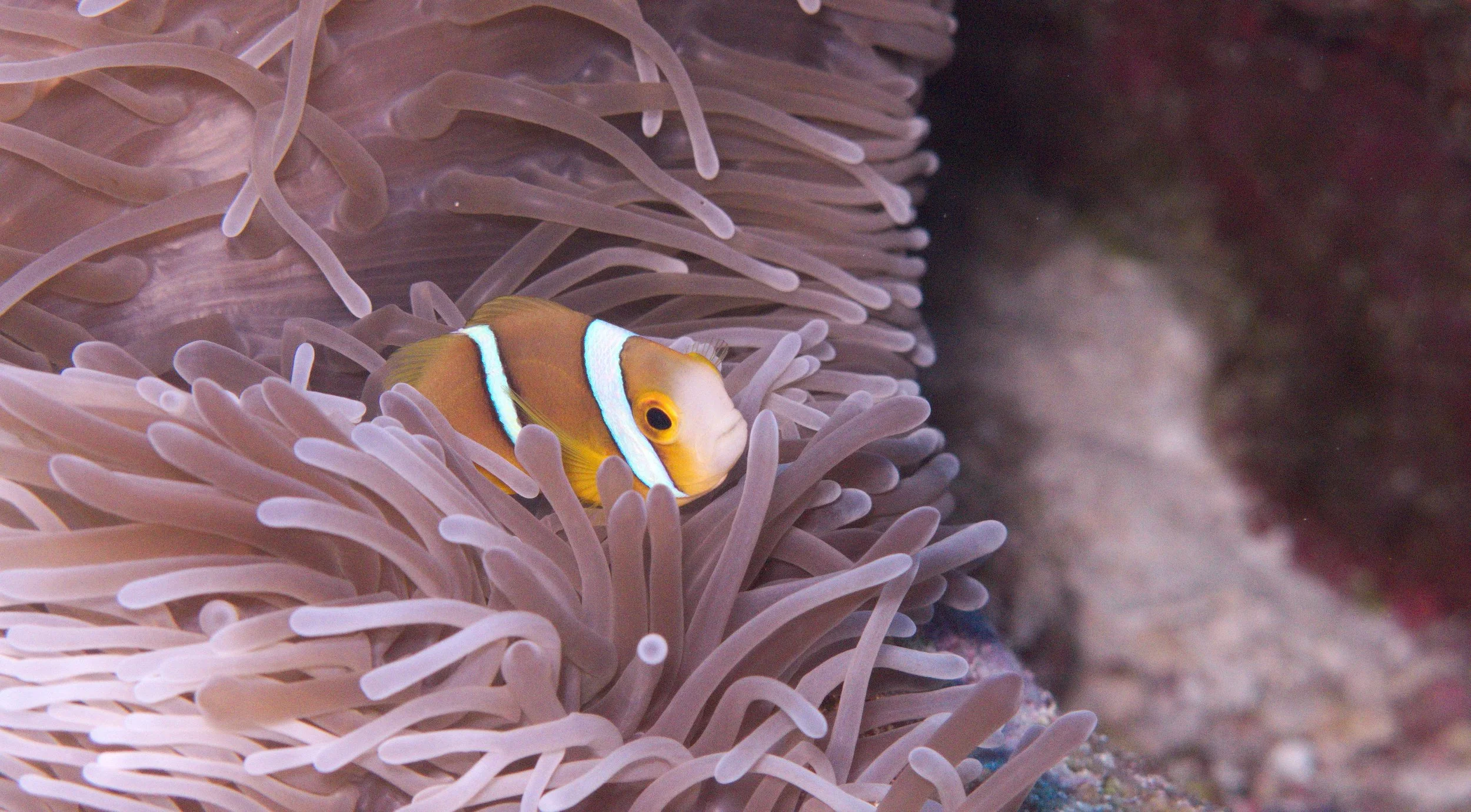
People
While I do not currently have dedicated funding for MSc or PhD students, I am always happy to discuss potential opportunities, including assistance preparing applications for scholarships. Each year my collaborators and I support undergraduate research at our long-term ornithological study site in Australia, and ensure that our team receives opportunities and the required support to gain experience leading and publishing research projects.
-
Tyler Connell
Field Technician
-
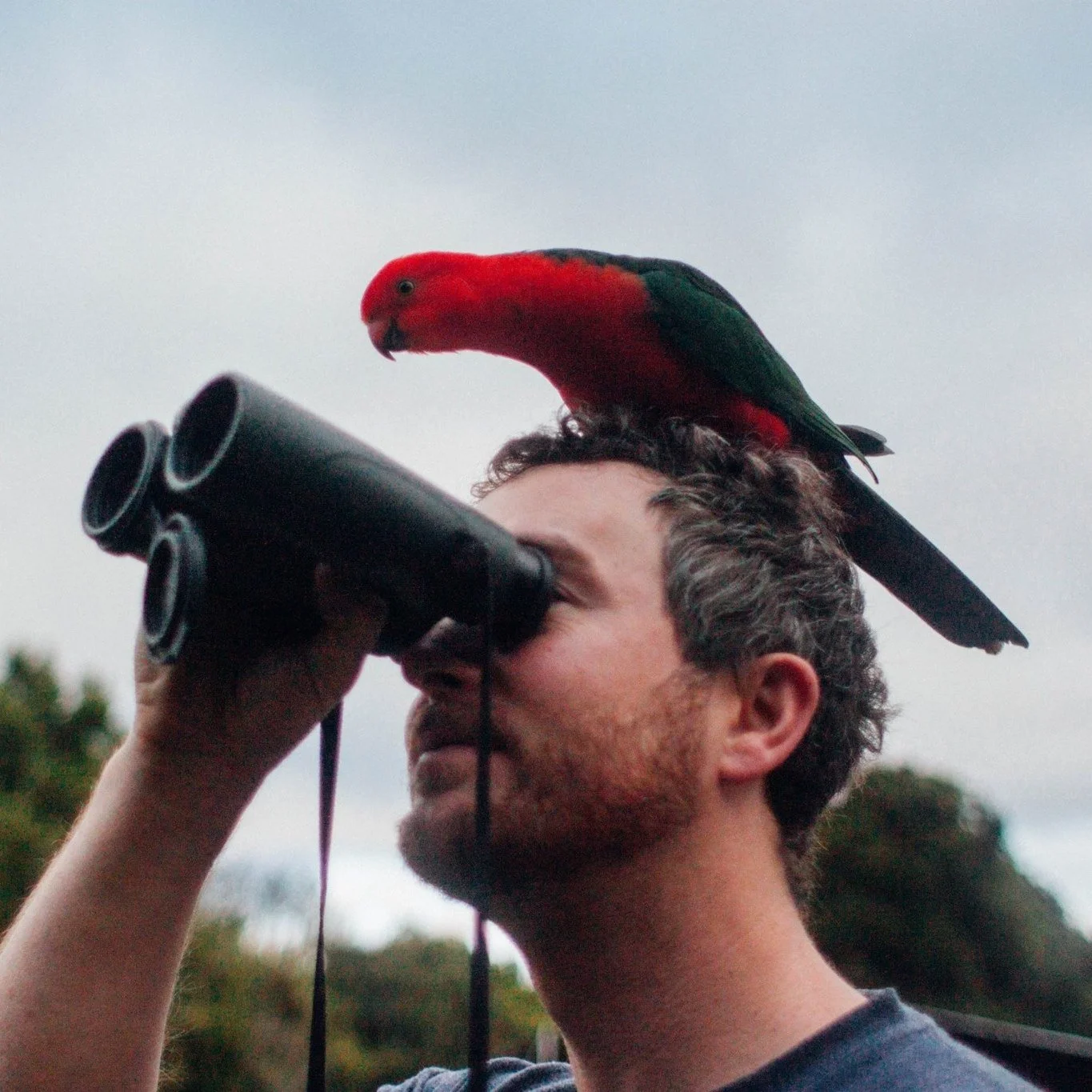
William Feeney
Group Leader
-
Angèle Germain
Field Technician
-
Ryan Jack
Crew Leader
-
William Kirsch
Field Technician
-
Adrianna Nelson
Field Technician
Lab alumni
PhD: James Kennerley, John Jones (visiting scholar).
Masters: James Lawrence, Oliver McBride, Josh Taylor, Zhou Bo.
Honours: Melissa Christi, Rebecca Bennett.
Undergraduates: Marissa Zamora, Sarah Partridge, Matthew Monteith, Lucy Soulliere, Ryan Jack, Lucas Corneliussen, Claire Huff, Paul Kessler, Paulo Ditzel, Emma Buckley, Bridget Tweedy, Katherine Christie, Ruth Maggeni, Joseph Di Liberto, Hazel Carr, Audrey Miller, Callan Ingham, Cody Vagg, Connor Hawey, Julian Grudens, Alexis Roberts, Rachael Weisbeck, Maggie Grundler, Matthew Marsh, Nicole Richardson, Jeff Grayum, James Kennerley, Thomas Ryan, Colleen Poje, Lacey Clarke, Miles Scheuering, Thomas Ryan, Ros Green, Michael Chan, Danielle Ferraro.
